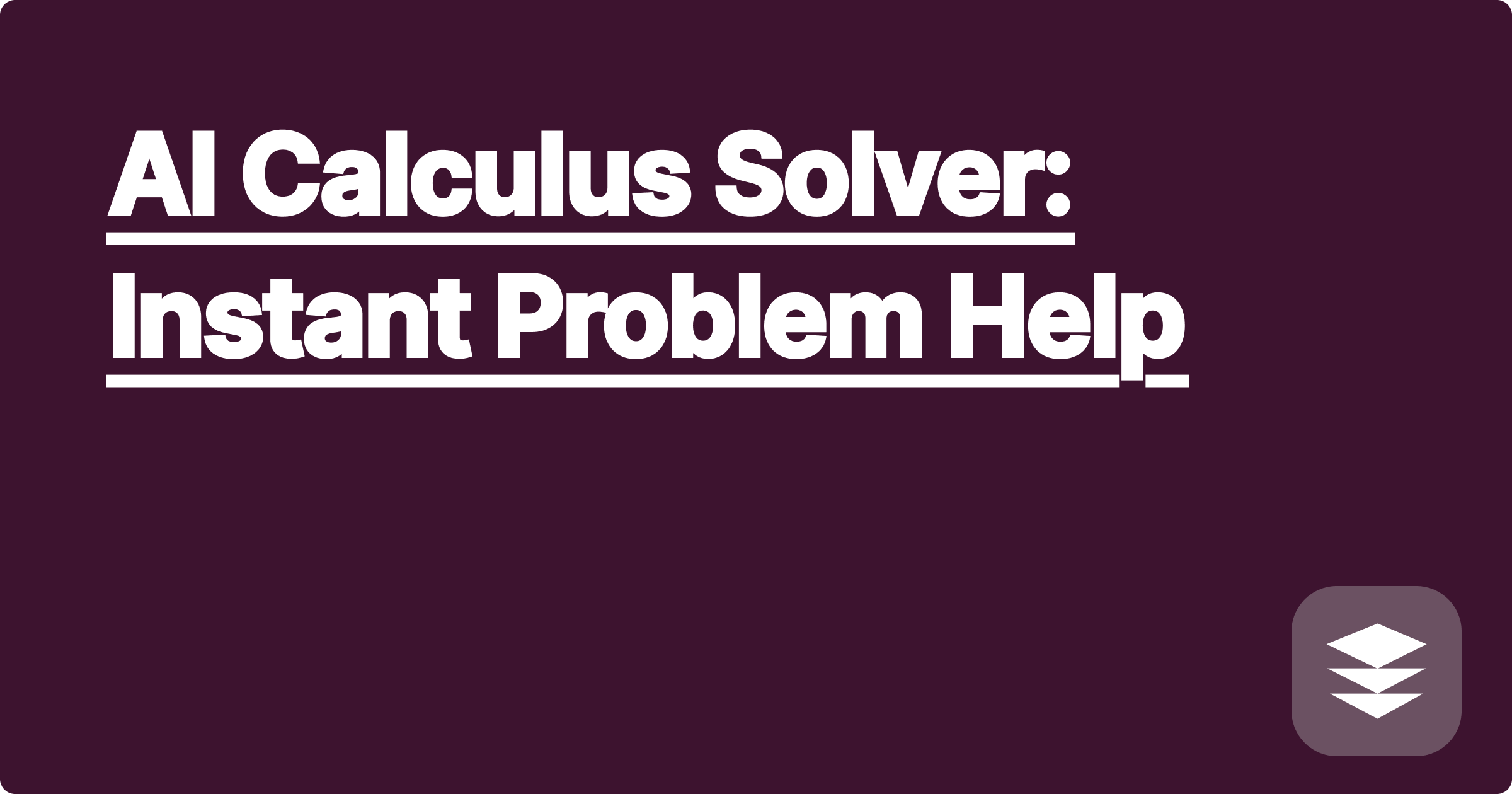
The world of STEM is built on rigorous problem-solving, often involving complex calculations and intricate data analysis. For students and researchers alike, navigating these challenges can be time-consuming and sometimes overwhelming. Imagine having a virtual assistant that could not only solve complex calculus problems instantly but also provide step-by-step solutions, visualize data, and even offer personalized learning support. This is the promise of AI-powered tools, offering a revolutionary approach to enhancing productivity and accelerating research in STEM fields. These tools are not just calculators; they are intelligent partners that can transform how we approach learning and research.
This shift towards AI-augmented learning and research is crucial for today's STEM students and professionals. The volume and complexity of data generated in modern research require advanced analytical tools. AI can bridge the gap, empowering individuals to efficiently process information, uncover hidden patterns, and focus on the higher-level thinking and creative aspects of their work. Mastering these tools is no longer a luxury but a necessity for staying competitive and pushing the boundaries of scientific discovery. This blog post delves into the practical application of AI tools, specifically focusing on calculus problem-solving and data analysis, providing actionable strategies and real-world examples to empower you in your STEM journey.
Calculus, a cornerstone of many STEM disciplines, presents a significant hurdle for many students. From intricate derivatives and integrals to complex differential equations, mastering these concepts requires significant time and effort. Traditional learning methods often involve repetitive problem-solving and tedious manual calculations, which can be demotivating and inefficient. Furthermore, understanding the underlying concepts and applying them to real-world scenarios can be challenging. Students often struggle to visualize the mathematical relationships and connect theoretical knowledge to practical applications. This gap between theory and practice hinders deep understanding and limits the ability to effectively utilize calculus in research and professional settings.
AI-powered tools like Wolfram Alpha, Symbolab, and even ChatGPT offer a powerful solution to these challenges. These platforms can not only solve complex calculus problems in seconds but also provide detailed, step-by-step solutions, allowing students to understand the logic behind each step. For instance, if you're struggling with a tricky integral, you can simply input the problem into Wolfram Alpha, and it will not only provide the answer but also show the integration techniques used, intermediate steps, and even alternative solution methods. Similarly, platforms like Symbolab offer interactive visualizations and graphical representations of calculus concepts, making it easier to grasp abstract ideas and connect them to visual representations. ChatGPT can be leveraged to explain concepts in plain language, provide examples, and even generate practice problems tailored to specific learning needs.
Let’s walk through an example using Wolfram Alpha. Imagine you need to solve the integral of x^2 sin(x) dx. First, navigate to the Wolfram Alpha website or app. Next, type in "integrate x^2 sin(x) dx" in the input field. Within seconds, Wolfram Alpha will display the solution, along with a step-by-step breakdown of the integration by parts method used to arrive at the answer. You'll see the intermediate steps, the choice of u and dv, and the application of the integration by parts formula. This detailed explanation allows you to understand the process, not just the final result. You can further explore related concepts, visualize the function, and even generate similar problems for practice.
Beyond basic calculus problems, these AI tools can handle more complex scenarios. Consider a physics problem involving the trajectory of a projectile. You can use Wolfram Alpha to calculate the projectile's range, maximum height, and velocity at any given time, given initial conditions like launch angle and initial velocity. In chemistry, you can use these tools to solve equilibrium equations, determine reaction rates, and analyze complex chemical kinetics. In engineering, AI-powered tools can assist with structural analysis, circuit design, and fluid dynamics calculations. For instance, you can model the stress distribution on a beam under load using Wolfram Alpha, inputting parameters like material properties and load distribution. The possibilities are vast, and these tools can be adapted to a wide range of STEM disciplines.
To maximize the benefits of AI in your STEM studies, consider these strategies. First, don't just rely on AI for answers; focus on understanding the underlying concepts and the solution process. Use the step-by-step solutions provided by these tools to learn the techniques and apply them to similar problems. Second, actively engage with the tools. Experiment with different inputs, explore related concepts, and visualize the results to deepen your understanding. Third, integrate AI tools into your study routine. Use them for homework help, exam preparation, and even research projects. Finally, be mindful of the limitations of AI. While these tools are incredibly powerful, they are not a replacement for critical thinking and human intuition. Always double-check the results and ensure they align with your understanding of the problem.
In conclusion, AI-powered tools are transforming the landscape of STEM education and research. By leveraging these tools effectively, students and researchers can significantly enhance their productivity, gain deeper insights into complex concepts, and accelerate the pace of scientific discovery. Embracing these technologies is not just about keeping up with the times; it’s about unlocking new possibilities and empowering yourself to tackle the challenges of tomorrow. Start exploring these tools today and discover the transformative potential of AI in your STEM journey. Explore platforms like Wolfram Alpha, Symbolab, and ChatGPT, experiment with different applications, and integrate them into your workflow. The future of STEM is here, and it’s powered by AI.
AI for Chemical Analysis: Faster Results
Ace STEM Exams: AI-Powered Prep Guide
AI Math Tutor: Master Complex Equations
AI in Biology: Data Visualization Made Easy
AI Flashcards: Personalized STEM Learning
AI for Engineering: Design Optimization
AI Data Analysis: Unlocking Research Insights
AI-Powered Note Taking: Organize Smartly